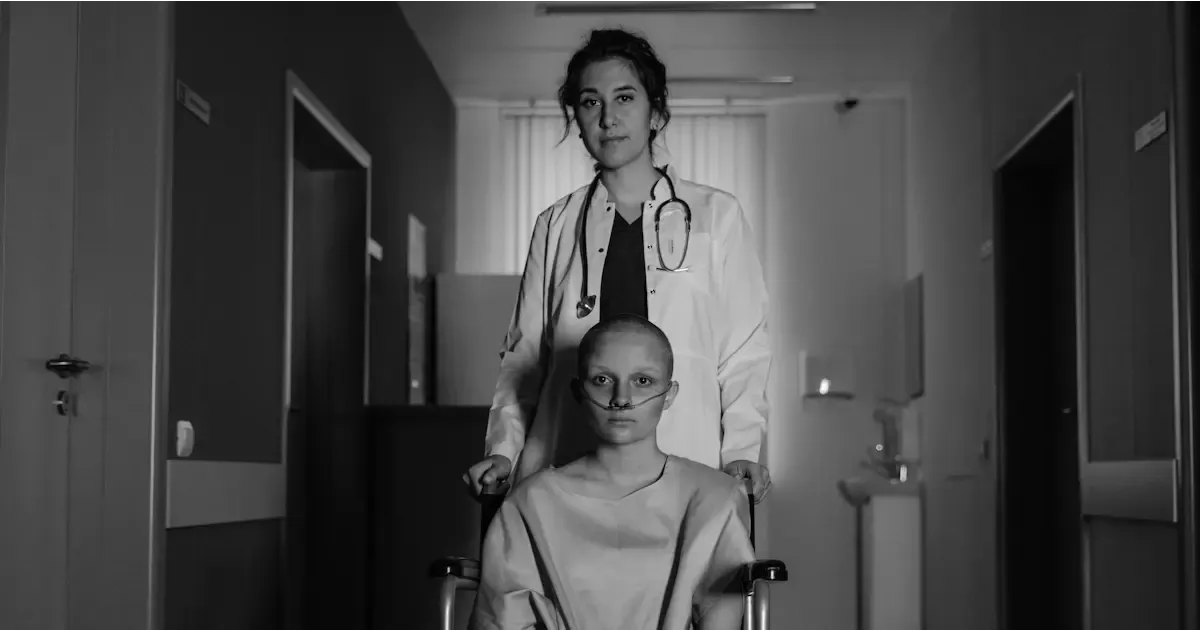1.Intlongevity
A. Brief overview of stomach cancer
Cancer cells start to grow in the stomach's inner lining when stomach cancer first appears.
Cancer may develop from these cells. the condition, sometimes known as stomach cancer, often progresses slowly over a long period of time.
late 60s to early 80s are most frequently affected by stomach cancer.
About 95% of stomach cancers begin in the glandular tissue lining the stomach.
The tumour may develop through the stomach wall and release cells into the lymphatic or circulation, or it may expand along the wall.
After leaving the stomach, cancer has the potential to spread to other organs.
B. Importance of recognizing symptoms in females
After menopause, the majority of these malignancies strike women.
Yet gynecologic malignancies can sometimes affect women before they reach menopause.
The medical director of the Cancer Prevention Center, Therese Bevers, M.D., states that although the risk of all cancer types increases with age,
It's crucial to know what to check for at any age.
This way, you can alert your physician as soon as any symptoms appear.
The signs and manifestations of cancer Gynecologic cancer symptoms might be vague and confused with those of other conditions.
Screening is only useful for detecting malignancies of the breast and cervical regions.
Thus, identifying these signs and discussing them with your primary care physician or gynaecologist will improve your chances of discovering cancer early on, when it is most curable.
Women themselves discover the majority of breast cancers while going about their regular everyday routines, such as shaving, bathing, or even scratching.
Keep an eye out for any breast or armpit lumps. Additionally, keep an eye out for any anomalies in the nipples, changes in the appearance and feel of your breasts, and alterations to the skin surrounding them.
It's not a sign of cancer if you have one or more of these symptoms. However, you should see your doctor to get checked out if they persist for more than two weeks.
2.General Symptoms
A. Digestive issues
The digestive tract, often known as the gastrointestinal (GI) tract, is affected by conditions known as digestive diseases.
Food and liquids break down during digestion into tiny pieces known as nutrients, which the body can absorb and use as fuel and cell building blocks.
The big and small intestines, stomach, oesophagus (food tube), liver, pancreas, and gallbladder comprise the digestive tract.
When digestive system problems first appear, the following symptoms are often present:
Swollen Sensitivity to Bloating A diarrheal illness acid reflux The inconsistency throwing up and nausea Anguish in the abdomen Ingestion issues
B.Appetite changes
Appetite loss is a symptom with a wide range of potential causes. When you're not feeling hungry, this happens.
Anorexia is the medical word for appetite loss. Anorexia nervosa is an eating disorder that is not the same as this.
You will feel better if the underlying cause of your appetite loss is found and treated.
The cause of an appetite loss determines the course of treatment.
In order to better understand the reasons for your symptoms and assist in treating them, your healthcare provider might perform certain diagnostic blood or imaging tests.
Possible course of treatment:
consuming frequent small meals throughout the day. taking care of any infections, diseases, or underlying issues.
Using drugs such as dronabinol, megestrol, cyproheptadine, low-dose corticosteroids, and others that increase hunger.
Nutrients: These are liquid vitamins and minerals injected into your vein via a needle. consulting a mental health professional for guidance on strange eating habits.
chirrupy irregularities your age or the kind of drugs you take. This adjustment will be made for you by your provider.
Consultation with a dietitian to assist you control your consumption patterns. following the advice of your healthcare provider when using vitamins or supplements.
Seeing a dentist for dental issues or tooth pain.
Your appetite should return to normal after the underlying reason for your lack of appetite is treated or resolved.
After recovering from an illness, accident, or infection, get in touch with your healthcare practitioner if your appetite doesn't return to normal.
C. Unexplained weight loss
A discernible decrease in body weight that happens even when a person is not attempting to lose weight is known as unexplained weight loss.
Unexpected weight loss may indicate a dangerous condition like diabetes or cancer. Finding the underlying reason for the weight loss is part of the treatment.
A discernible decrease in body weight that takes place even in the absence of intentional weight loss is known as unexplained weight loss.
Dietary, exercise, or lifestyle modifications do not produce weight loss.
A weight reduction of five percent of one's body weight, or ten pounds, or more over the course of six to twelve months is deemed "unexplained."
Unexpected weight loss may indicate a dangerous disease or condition.
This is why it's critical to get medical help if you or a family member experiences unexplained weight loss.
3.Specific Symptoms in Females
A. Menstrual irregularities
A typical menstrual cycle for most women lasts between 21 and 35 days.1. But 14% to 25% of women experience irregular monthly cycles,
Which might be heavier or lighter than usual, shorter or longer than usual, or accompanied by other issues like cramping in the abdomen.2.
Anovulatory cycles, in which ovulation does not occur, or ovulatory cycles, in which ovulation does occur, are two types of irregular cycles.
B. Pelvic or abdominal pain
Menstrual cramps, ovulation, and digestive problems are a few potential reasons of pelvic pain in those who have female reproductive organs.
The lowest region of the abdomen is affected by pelvic pain, which might feel dull or acute.
Between the groyne and the belly button is the lowest point of the abdomen.
An infection or problem with the reproductive system or other organs nearby can occasionally be indicated by pelvic pain.
If so, a visit to the doctor might be necessary. An egg and other fluid are released by the ovaries during an ovulation.
The egg will then enter the uterus through the fallopian tube. Additionally, the ovary's discharged fluid may irritate the pelvis and abdominal area.
Depending on which ovary releases the egg, the pain may occur on one or both sides of the body and continue for minutes or hours.
Treatment is not necessary as the pain is just momentary.
C. Nausea and vomiting
Numerous factors, including discomfort, sickness, and pregnancy, can result in nausea and vomiting.
If your nausea and vomiting continue for more than a week, get medical attention.
The involuntary response of vomiting causes the stomach's contents to be released through the mouth.
It's also known as "throwing up" or "being sick." The feeling that you might throw up but aren't actually vomiting is called nausea.
Vomiting and nausea are both extremely common symptoms that have a variety of causes.
Although they can affect both adults and children, pregnant women and cancer patients most likely experience them.
4. Advanced Symptoms
A. Blood in stool or vomit
Colorectal Cancer Blood Found in Your UrinePhysician and clientSeeing blood in your stool, also known as "faecal matter" or "poop," is a frightening sight.
Rectal bleeding is most likely the cause of bright red blood on the tissue or in the toilet. Generally speaking, blood in your stool appears to be sticky and black.
Stool is particularly dark when there is bleeding further up in the colon or digestive tract.
You should call your doctor if you see blood in your faeces or suspect that there may be blood in it.
Even if this isn't necessarily an indication of cancer, it's still a good idea to have it examined as soon as possible.
It's also critical to understand that not all intestinal bleeding results in blood that is visible to the unaided eye.
You could be unaware that there is blood in your faeces.
Therefore, if you are over 45 and exhibit any colorectal cancer symptoms or indicators, discuss having a colonoscopy with your physician.
B. Persistent fatigue
Everyone has occasional fatigue. Yet, being fatigued refers to being extremely overtired.
It's difficult to wake up in the morning, go to work, go about your daily routines, and get through the day when you're extremely tired.
When you're tired, you could feel like you need to sleep badly but wake up feeling rested rather than renewed.
C. Jaundice
Most tumours that have the potential to produce obstructive jaundice come from periampullary, biliary, or pancreatic locations.
Primary carcinomas of the stomach, colon, rectum, oesophagus, kidney, and lung are the most common tumours that produce external constriction of the biliary channels, leading to obstructive jaundice.
There are very few documented examples of pancreatic metastasis from initial uterine cervical cancer.
We report a case with obstructive jaundice that was previously thought to be caused by pancreatic cancer.
Metastases from a primary malignant carcinoma in the females are the origin of the obstructive jaundice, according to a thorough radiographic, pathological, and laboratory evaluation.
5.Risk Factors for Stomach Cancer in Female aage
A. Age
Your chance of getting cancer rises with age. The largest risk factor for the disease is really age.
People 45 years of age and older receive a diagnosis for more than 90% of cancer cases. Nearly 28% of newly diagnosed instances of cancer are in those older than74.
Scientists are unsure about the cause of this. It's possible that as the years go by, your cells have more opportunity to become defective or to mutate and develop into cancer.
Alternatively, being older just indicates that you have had more time to be exposed to chemicals, tobacco smoke, sunshine, and other cancer-causing substances.
The likelihood of developing cancer later in life is probably influenced by exposure and time.
B. Family history
Cancer is a prevalent disease; most individuals know someone who has had or is now suffering from the disease.
It is not unusual for a family to have multiple cancer patients.
Cancer can run in families:
Simply by coincidence, which is most frequently the result of family members sharing environmental and lifestyle risk factors like excessive
Sun exposure or smoking, or because a rare defective gene has been inherited that raises the risk of cancer.
A defective gene transmitted from the mother or father accounts for only 5% of some types of cancer.
We refer to this type of disease as familial or family cancer. Another name for this is an inherited propensity to cancer.
Even in cases where a defective gene raises the chance of cancer, not every member of the family will get the disease.
C. Lifestyle factors
The enormous illness burden caused by cancer can be mitigated by leading healthy lifestyles, which are mostly made up of maintaining a healthy weight,
Eating a balanced diet, exercising regularly, consuming little alcohol, and quitting smoking.
The relationships between combined lifestyle variables and cancer morbidity and death have not, however, been summarised in a comprehensive review.
The HRs (95% CIs) for incident cancer and cancer mortality were 0.71 (0.66 -- 0.76; 16 studies with 1.9 million participants) and 0.48 (0.42 -- 0.54; 30 studies with 1.8 million participants), respectively, when comparing people with the best versus the least healthy lifestyles.
The lowest risk of bladder, breast, colon, endometrial, oesophageal, kidney, liver, lung, rectal, and stomach cancer was linked to adopting the healthiest lifestyles, ranging from 17 to 58%. In the subgroup analysis,
The relationships were statistically significant and mostly consistent among participants with various characteristics.
6.When to See a Doctor
A. Persistent or worsening symptoms
The majority of signs and symptoms can be brought on by other factors rather than cancer.
See a doctor to determine the cause of any signs and symptoms that you experience if they persist or worsen.
A physician can assist in determining the cause and, if necessary, provide treatment if cancer is not the cause.
As an example, lymph nodes are a component of the immune system and aid in the removal of dangerous compounds from the body.
Normal lymph nodes are small and sometimes difficult to locate. However the nodes may enlarge in cases of infection, inflammation, or malignancy.
Some that are close to the skin's surface can even appear as swelling or lumps beneath the skin. They can even grow large enough for you to feel them with your fingertips.
Cancer that becomes lodged in the lymph nodes is one cause of their swelling. Therefore, you should consult your doctor to find out what's going on if you have a lump or strange swelling.
B. Risk factors present
Risk is the possibility that something will happen. The most common way to define "cancer risk" is as an individual's likelihood of developing cancer.
This expression also refers to the possibility that the cancer will return following therapy in the context of cancer care.
A recurrence of cancer is what happens when it comes back.
Many people's health is improved by research on cancer risk.
For instance, anti-smoking efforts were launched after researchers found that smoking raises the risk of lung cancer, and they have shown to be extremely successful in saving lives.
It's also critical that individuals are aware of their individual cancer risk.
You can lower your risk of having cancer and/or raise your likelihood of discovering cancer early on by making decisions about your health and lifestyle based on your particular risk factors.
An early diagnosis of cancer may result in a better prognosis or be easier to treat.
C. Importance of early detection and longevity
refers to the use of diagnostic testing to find cancer in individuals who do not yet exhibit symptoms of the disease at an early stage.
The goal of screening is to lower cancer-related illnesses and deaths. It is a generally acknowledged, successful strategy that helps those who are worried about cancer or who are at risk for the disease.
Being one of the first steps taken to avoid sickness, this is significant.
Additionally, those with early-stage cancer have a greater likelihood of full recovery, a cure, improved quality of life,
7.Conclusion
A. Summary of key points
Uncontrolled cell division is a result of cancer. Additionally, it keeps them from passing away at the appropriate time in their life cycle.
The condition may arise as a result of lifestyle decisions including smoking and genetic causes.
A number of factors influence how DNA interacts with cells and controls their division and demise.
In the United States, breast cancer is the most frequent kind after nonmelanoma skin cancer.
The quality of treatments is advancing continuously. Radiation therapy, surgery, and chemotherapy are a few examples of modern techniques.
Precision medicine and stem cell transplantation are two more recent treatments that help certain people.
B. Encouragement for seeking medical attention promptly.
Some patients choose to compile data from studies that could be relevant to their particular cancer type and stage.
Always discuss any doubts you may have about a particular study's relevance to your treatment plan with your medical team.
It's critical that you don't alter or cease your present course of therapy because of something you read.
Think about posing these queries to your medical team:
- I read a study regarding a novel therapy. Does my cancer kind and stage have anything to do with this treatment? Was it a study that included folks like me?
- What books can I read to find out more about the sort of cancer I have?
- Do medical journals that address my particular form of cancer exist?
- Will I be better off participating in a clinical study?
- Which clinical trials am I eligible for? How can I learn more about them and where can I find them?




